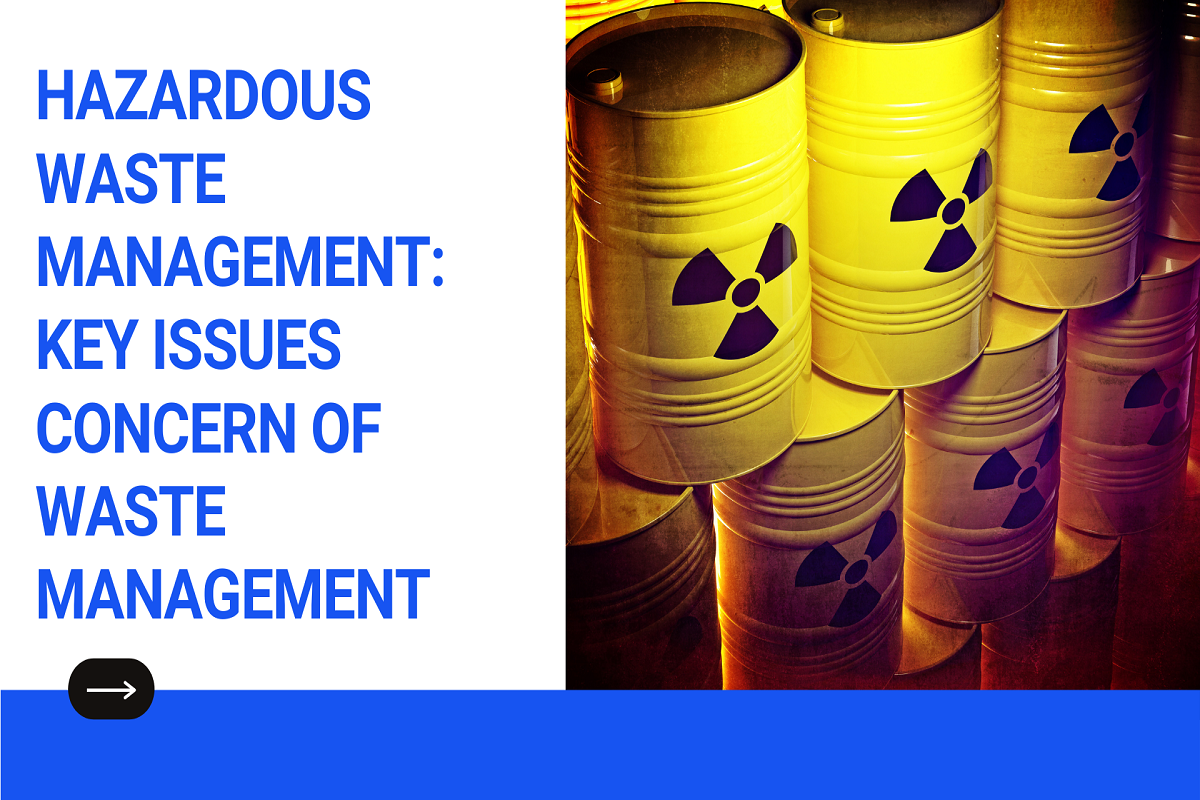Hazardous Waste Management: key Issues concern of Waste Management
What is the concept of hazardous waste?
Hazardous waste is waste that is toxic or potentially hazardous to human health or the environment. Although hazardous waste may be liquids, solids, gases, or sludge in its most basic form.
Hazardous wastes have one or more radioactive or hazardous properties, such as being explosive, oxidizing, flammable, irritant, harmful, poisonous, or carcinogenic, as well as having negative environmental and human health effects. Hazardous waste not only negatively affects the ecosystem by contaminating the air, water, and soil, but it also harms the natural environment and human health through a variety of channels.
Hazardous waste has been characterized and categorized as waste with inherent chemical and physical characteristics such as toxicity, ignitability, corrosivity, carcinogenicity, or other properties in recent decades by researchers. Nonetheless, in developing countries, there is a lack of definition and classification, making it difficult to define the needs for hazardous waste treatment and disposal. Hazardous waste is divided into three categories: household hazardous waste, industrial hazardous waste, and medical waste.
Focus:
- Ensure transparency and follow the rule of law.
- Monitor your pollution and pollutions to keep your operating license fit for nature or not.
- Be environmentally conscious and combat contamination caused by hazardous waste disposal in the wild.
Municipalities cannot provide industrial hazardous waste disposal services, retail take back programs, or occasional drop-off services in some cases. Producer responsibility for hazardous waste products such as human and farm animal drugs, waste oil, oil filters, paint and paint tubes, pesticides and herbicides (household), ink and ink containers from publishing organizations has not been planned or enforced in developed countries.
The following are the key issues concerning the control of hazardous waste in developing countries:
There aren’t enough laws, schedules, regulations, or guidelines on various aspects of waste collection and disposal.
- Local government or private sector landfill operators lack policy guidance or incentives.
- Institutional capacities are insufficient.
- There aren’t enough activities to avoid hazardous waste.
- Hazardous waste is mixed with household or industrial waste.
- Hazardous waste disposal facilities are lacking.
- Failure to keep accurate records of the hazardous waste produced.
- Existing environmental licenses, for the most part, do not lead to the use of the best available technology (BAT).
- Not all regional environmental authorities use waste classification codes to record the produced waste types in the permit.
- Typically, data on waste output rates that correlate to the observed waste generation is lacking. The waste information system in developing countries is insufficiently comprehensive to collect data on hazardous material concentrations, just total mass.
- There is a lack of compliance and adherence to current regulations.
- There aren’t enough priority sectors for hazardous waste prevention.
- Lack of compliance with best international hazardous waste management practices.
- Inadequate infrastructure and hazardous waste disposal self-sufficiency.
- There are no dedicated waste managers or committees, and there are no plans in place to monitor hazardous waste practices.
- There are no dedicated national facilities available.
- There is a lack of direction, knowledge, and capacity-building training on sectoral hazardous waste management.
- There are no concrete regulations in place to deal with hazardous household waste.
Hazardous waste prevention
Prevention is at the top of the Hazardous waste management ladder, according to scientific research reports, and reflects the preferred policy approach to materials management as well as an alternative to reducing material or resource waste. As a result, it is established that waste prevention is preferable to waste generation, as well as the monetary and environmental costs associated with waste generation. It has been established that nuclear waste will remain a top priority in order to maximize resource usage.
To minimize the possible environmental and public health effects, an integrated approach should be used to plan strategies and agencies should lead and coordinate a broad variety of preventive measures.
Creation of initiatives based on a variety of strategic goals in order to accomplish the aim of prevention, which would include the prevention of toxic and hazardous wastes, should be one of them. This means that a variety of legislation and creative mechanisms to regulate the content of these potentially dangerous and toxic chemicals should be developed in order to reduce the public health and environmental impacts of radioactive and hazardous wastes.
henry cruise

